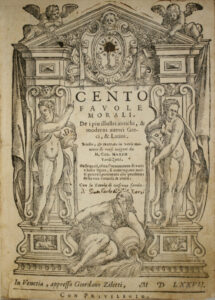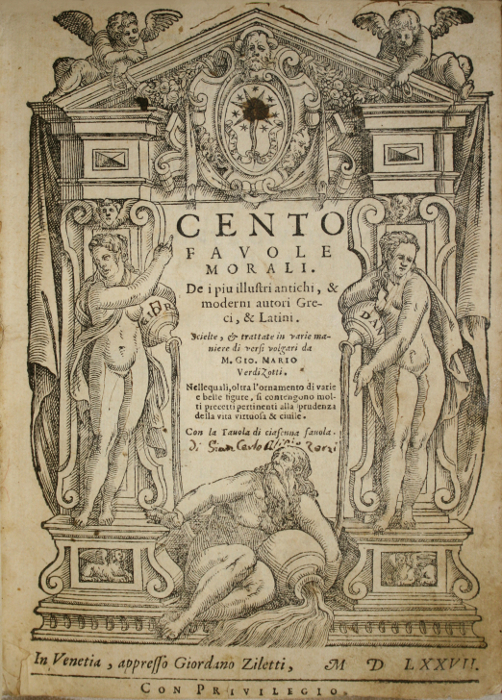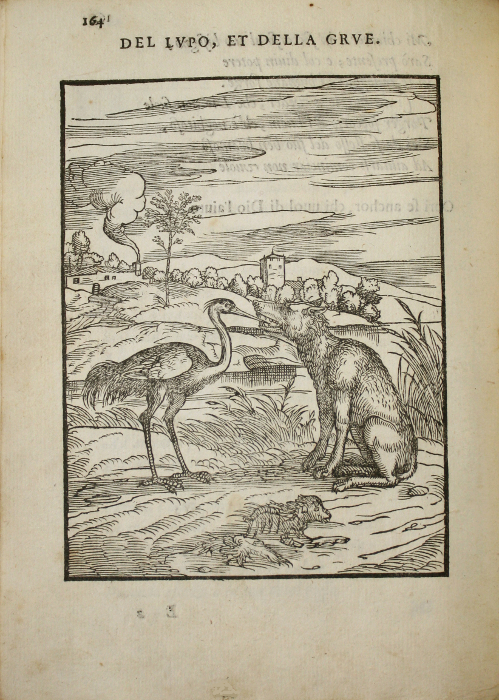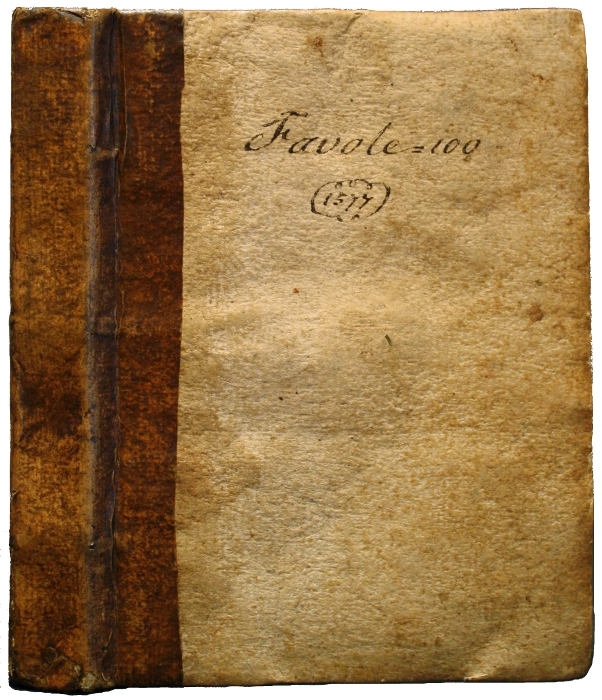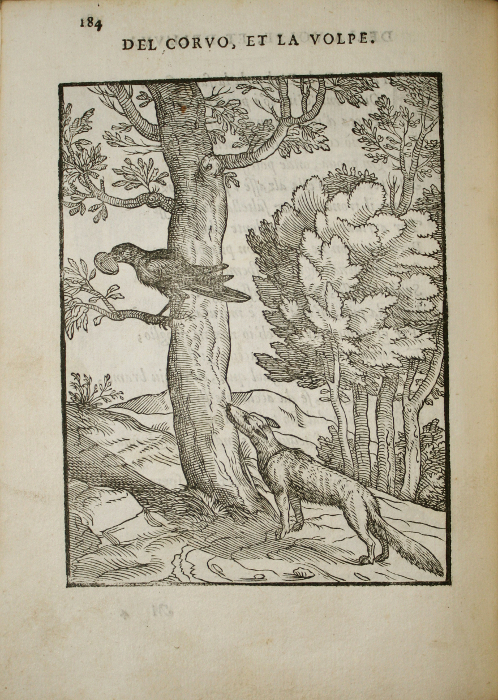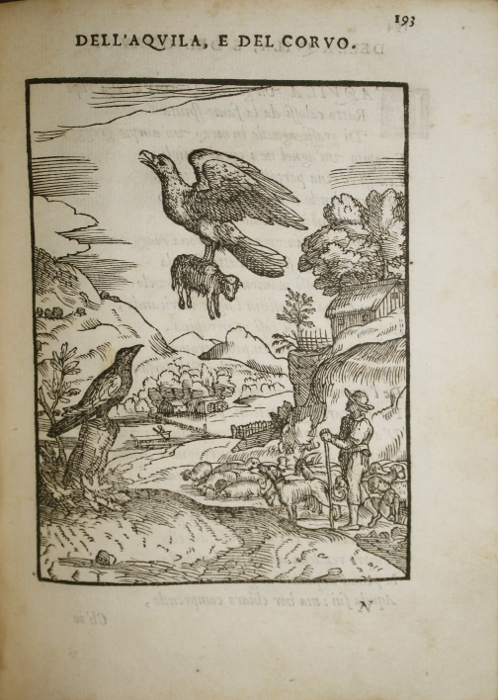VERDIZOTTI, Giovanni Mario. Cento Favole Morali. De i piu illustri antichi, & moderni autori Greci, & Latini. Venetia, appresso Giordano Ziletti,1577.
8vo [193 x 142 mm], (1) title, 1 plate out of pagination, 301 pp., (9) pp. Title in an architectural border, 101 full-page engravings illustrating the fables. Bound in contemporary half-vellum, title and date handwritten on the front cover. Contemporary binding.
Rare third edition of this remarkable collection of fables by Verdizotti, “sought after because of the figures very finely wood engraved by Verdizotti himself”. (Brunet, V, 1130).Rahir, La Bibliothèque de l’amateur, 669 ; Fairfax Murray, Libri Italieni, 2279 ; Destailleur, 1187 ; Cicognara, 1129 et Graesse, Trésor de livres rares, 280 (for the first edition).
The present collection was first published in 1570, and then in 1575 in Venice.
The 101 superb full-page engravings that illustrate the fables were drawn and engraved on wood by Verdizotti, who was the pupil and the friend of Titian.
“Illustrated with 1 title and 101 figures finely wood engraved by Verdizotti himself. Some figures were drawn by Titian”. (Destailleur)
« Libretto elegante, a cui contribui molto co’suoi disegni lo stesso Tiziano grande amico del Verdizotti, quand’ auche non lavorasse ad alcuna delle tavole che tutte sono in legno intagliate. Dopo il frontespizio figurato e la dedica al C. Giulio Capra in cinque foglietti di stampa con bellissimi tipi eseguita ; a tergo dell’ultimo st auna figura d’Astronomo col quadrante osservando una stella. Nel foglietto appresso e un avviso ai lettori dello Stampatore. Cominciano immediatamente le favole in numero di 100 con altrettante tavole, le quali pel fatto poi sono cento e una non facendo parte di questo numero la prima dedicata ai Lettori… » (Cicognara).
According to Mortimer, Verdizotti was probably influenced by the « Fabulae centum » of Gabriello Faerno published in 1563. He specifies that “the engravings of Faerno are considered as being from Titian, and some drawing by Verdizotti are also attributed to Titian. Verdizotti who was the friend and the pupil of titian, could have seen the suites of Faerno in preparation. Among the 100 fables, 37 of Faerno’s subjects don’t appear in Verdizotti’s work. The texts rejected by Verdizotti mainly deal with men and god, and his additions seem to be animal fables… When the subjects are illustrated, less than half of Verdizotti’s engravings show some resemblance with Faerno’s engravings. When there are some similarities, the position of an animal can be similar but the background is then very different, as if it was deliberately modified. No one knows if the attribution to Titian lyes on these small resemblances or on the association of Verdizotti with the artist.”
Verdizotti, known as the prince of Italian fabulists, left about a hundred fables that amply inspired La Fontaine.
We can find in the Cento favole the poem entitled “Il Lupo e le Pecore” that will be used as a basis by La Fontaine for his fable of “the wolf and the lamb”.
A fine copy of this collection of fables preserved in its contemporary binding.
Among French public Institutions, only the B.n.F. and the Library of Caen own a copy of this rare edition.
